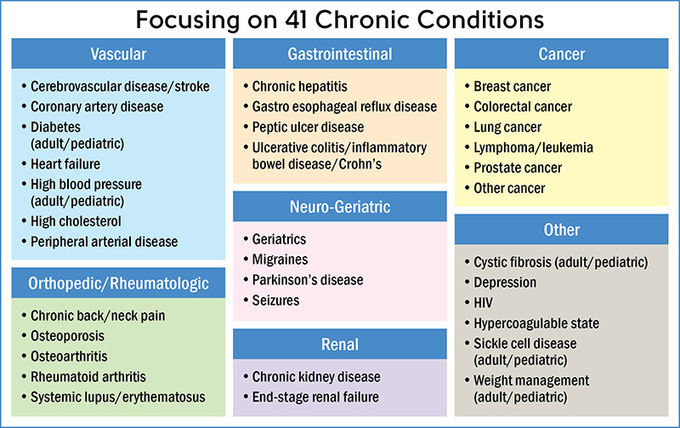July 2017
Adopting a Healthy Sleep Routine

Getting too little sleep or not sleeping well can have a
negative impact on your health. Lack of sleep is linked to depression,
diabetes, obesity, and heart disease. Did you know that a third of U.S. adults
don’t get enough sleep? But there is good news! You can get better sleep by
making some simple changes to your daily routine.
Create a healthy sleep environment
-
Keep your bedroom quiet, dark, relaxing, and at
a cool, comfortable temperature.
-
Remove electronic devices from the bedroom. The
light from televisions, computers and smart phones stimulate our brains and
make it harder to fall asleep.
- Use the bedroom for sleep only.
Create a bedtime routine
-
Be consistent with bedtime. Go to bed and rise
at the same time, even on weekends.
- Avoid large meals, caffeine, alcohol, and
nicotine a couple of hours before you go to bed.
- Take time to relax before bed with a hot bath or
practice relaxation techniques like meditation and deep breathing.
Prepare for sleep well before bedtime
- Be physically active for at least 30 minutes
each day.
- Try to spend some time outside every day.
-
If you need a nap, try to limit it to no more than
20 minutes and take it earlier in the afternoon.
Try using a sound machine
Background noise like dogs barking, doors slamming, and
sirens outside the window disturb our sleep. They can cause us to wake up
throughout the night, even if we don’t remember hearing the sounds. If you have
a hard time falling asleep or staying asleep, you can try turning on a white
noise machine or a fan in your bedroom. These will create a consistent, smooth
sound that blocks the noise and helps you stay asleep.
Keep a sleep journal
Always yawning? Find
yourself drinking coffee all day to stay awake? Despite your best efforts, you may not be getting enough sleep. You can learn a lot about your sleep habits
by keeping a sleep journal. Record your activities from that day, such as your
exercise, caffeine intake, stress levels, alcohol intake, and the times that
you fall asleep and wake during the night. You may begin to notice a pattern
that certain lifestyle habits are either positively or negatively impacting
your sleep. Many people find that they sleep better on days that they get more
exercise and sleep less when they have had a few cups of coffee. Keep your sleep journal beside your bed so it
is accessible before you go to bed and when you wake up.
Active Health is presenting the "Shh...Good Night...Sleep Well" webinar on July 18. Attend one of three sessions to learn how you can improve the quality of your sleep. Register today...
Sources:
CDC: Getting Enough Sleep?
NHLBI: Strategies for Getting Enough Sleep
CDC: How Much Sleep Do I Need?
CDC: Sleep and Chronic Disease
|

The long daylight hours can be challenging enough for
getting to bed routinely and staying asleep long enough. But did you know that
shift work can sometimes set you up for shift work sleep disorder? Here are a
few tips for how to spot it and what you can do about it.
You may be one of those who works night shifts or maybe even
rotates shifts regularly. If you have trouble sleeping during the day or just
aren’t feeling rested, you may have shift work disorder. It’s really a problem
for those working the night shift, when your body naturally should be sleeping.
Not everyone has trouble getting good sleep who works shifts or rotate shifts.
But if you find that over time, your sleep doesn’t improve, it may be time to
take some action.
Keep a sleep journal
Before you see your provider, it will help to track your
sleep for a week or two. Journal things like when you sleep, how much you
sleep, and how you feel upon waking. Your provider may then want to do other
tests, maybe in a sleep lab, or have you wear a special device to monitor your awake
and sleep times.
Shift work and your
health
Shift work can increase stress, which may make you more
likely to get sick. Lack of sleep can increase the chance of car accidents and
on-the-job accidents. Your concentration and job performance may also suffer.
Some experts think the shift work and the disrupted sleep cycle affects how
much melatonin your body makes. This hormone controls sleeping and waking
cycles and is mostly made when it’s dark. Working at night in artificial light
may cause your body to make less melatonin than it needs. This can possibly
make you more likely to get sick or have other health problems.
Sleeping better with
shift work
Some sleep problems can only be fixed by switching to
regular work hours. But working shifts and getting good sleep is possible.
You’ll need some strategies to control your environment and take good care of
yourself.
- Use a sleep mask or blackout drapes
- Cover bright digital devices
- Wear earplugs
- Use “white noise” for distraction
- Keep the temp at around 65°F
-
Eat healthfully
-
Limit caffeine
and alcohol
-
Exercise
regularly
- Nap if needed
Source:
CDC
Back to top
|

An employee
assistance
program
(EAP) is an employee benefit program offered by many
employers. EAPs are intended to help employees
deal with personal problems that might adversely impact their job performance,
health, and well-being. AlaskaCare EAP offers a confidential counseling service
free of charge to AlaskaCare members and their
dependents. It provides assessment, treatment and referral services. It is
geared to provide assistance with difficulties that you might encounter at
work, emotional problems, stress, family and relationship problems, and drug
and alcohol abuse.
Resources are Available
Additional
information, self-help tools and other resources are available online at the
above links. Or call for more information, help and support. Counselors are
available 24 hours a day, seven days a week to provide confidential assistance
at no cost to you.
AlaskaCare EAP, administered by Aetna, provides
responsive, caring and effective services to help balance your personal and
professional life.
Some of the areas the EAP can help with include:
- Personal balance
-
Emotional wellness
- Marital/relationship issues
- Family issues
-
Communication skills
-
Stress management
- Alcohol and drug issues
- Work-related issues
- Grief issues
- Financial and legal concerns
Find more information about AlaskaCare EAP on the AlaskaCare website or call (855)
417-2493.
Back to top
|
Want to stay healthy and feel your best? Now you can—at no
extra cost! The
Condition Management program provided by Active Health Management, available to you through your AlaskaCare plan, can help you
manage chronic health conditions such as diabetes, high blood pressure or coronary artery disease.
Health coaching is
all about putting you in control and giving you the help you need to feel your
best. Active Health registered nurses are available to help you manage chronic health conditions
and avoid further complications. Active Health registered nurses and registered dietitians work with members with chronic health conditions to
help them take control of their health and avoid further complications. We support 41 long-term health conditions.
This one-on-one
support does not replace a doctor, but many people find
they benefit more from their regular doctor visits because of the information
and coaching they received from Active Health.
The nurse coach
will work with the participant over the phone to:
- Help understand the
condition
- Answer questions
about medications and side effects
- Explain the tests a
doctor orders and what the results mean
Digital coaching
supports participants between coaching sessions and provider visits. Your team of ActiveHealth registered nurses is available by phone
Monday through Saturday to support you. Call today (877) 749-6995 to set up an appointment with
a registered nurse. You can also visit the MyActiveHealth.com/Alaskacare
website and utilize any of the digital coach self-management programs from your
computer or smartphone.
 Back to top
 |
|
This biceps exercise is simple and effective for training biceps muscles. You can perform it at home or in the gym.
Try it out...
Back to top
|

Vitamin D is important for strong
bones and may contribute to overall good health. Alaskans should select foods
that are high in vitamin D, such as Alaska salmon, and should talk with their
health care provider about vitamin D and the risks and benefits of
supplementation.
Back to top
|
 This dish is mostly made up of fresh fruits and
vegetables, with Alaskan fish and Alaskan spot prawns thrown in. Pair it with whole-grain tortilla chips and low-fat milk to
balance it out for a healthy meal.
Get the recipe...
Back to top
|
|